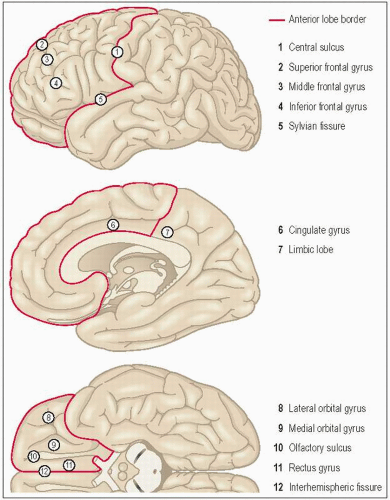Electroencephalography (
EEG) findings during periods of time when no seizure is occurring in a patient, termed interictal
EEG, can often be normal without any evidence of interictal epileptiform activity in up to 40% of patients. Epileptiform spike activity in frontal lobe epilepsy may not appear focal or restricted to the frontal lobe. Often spikes can appear lateralized to one hemisphere or even generalized. In some instances a leading spike can be seen preceding a more diffuse or generalized spike, which is termed secondary bilateral synchrony. When this finding is recognized it can indicate focal epilepsy as opposed to generalized epilepsy (see
case 1).
When focal epileptiform spikes are seen, they are more likely to occur in the lateral frontal cortex and may be seen in about 50% of these cases. In the absence of a magnetic resonance imaging (
MRI) lesion, focal epileptiform activity can often give some guidance for further testing or suggestions to specific modalities to further elucidate the epileptogenic zone.
EEG identified activity seen during a seizure, or ictal
EEG, can vary in its utility in localization or even lateralizing the epilepsy (see
case 2). At times, an electromyography artefact obscures the
EEG so that no clear information is obtainable. This can be seen in 20% of the cases. At other times a more diffuse pattern can be seen but again not lending any further localization value. Localizable ictal
EEG patterns are described in only 30-40% of cases with frontal lobe epilepsy. At times when the surface
EEG shows a diffuse pattern an invasive
EEG recording with subdural arrays can provide a more localized seizure onset. Focal scalp ictal onset patterns often consist of low amplitude fast activity, occasionally high amplitude spike or polyspike activity, or a leading focal spike/transient prior to more diffuse changes seen on
EEG (see
case 3).










